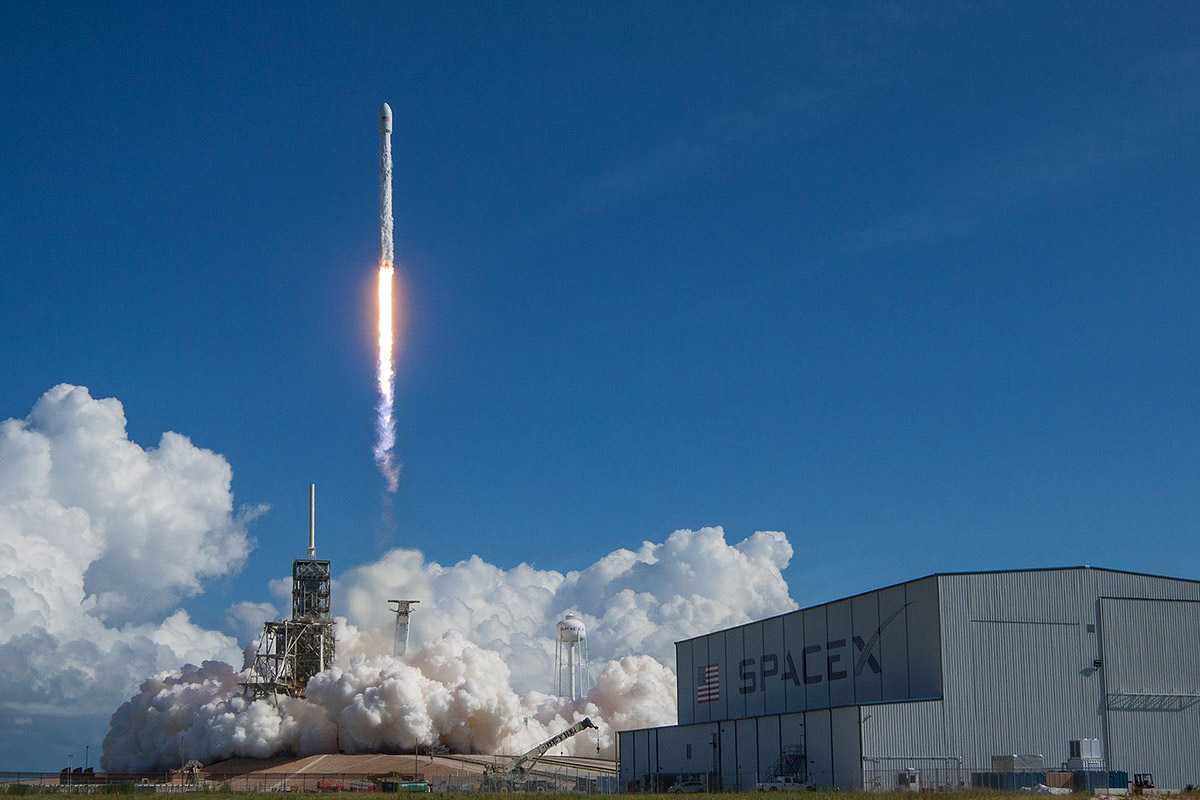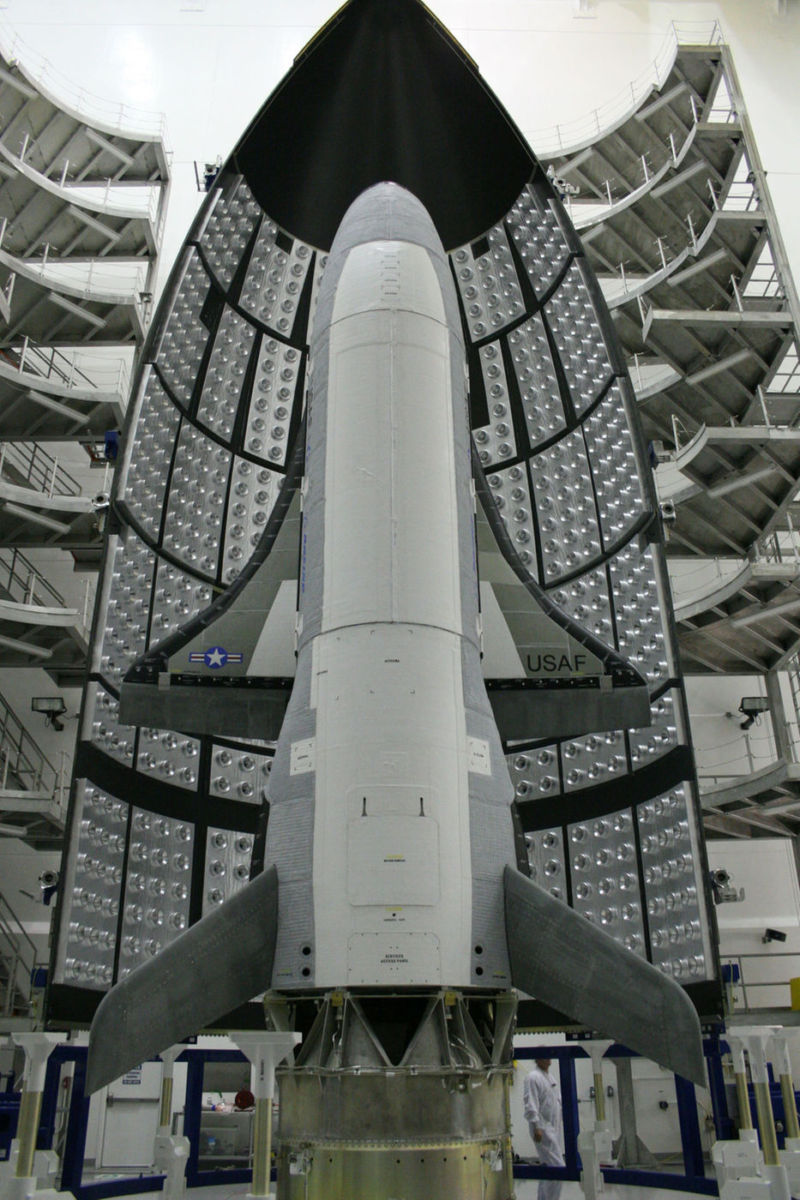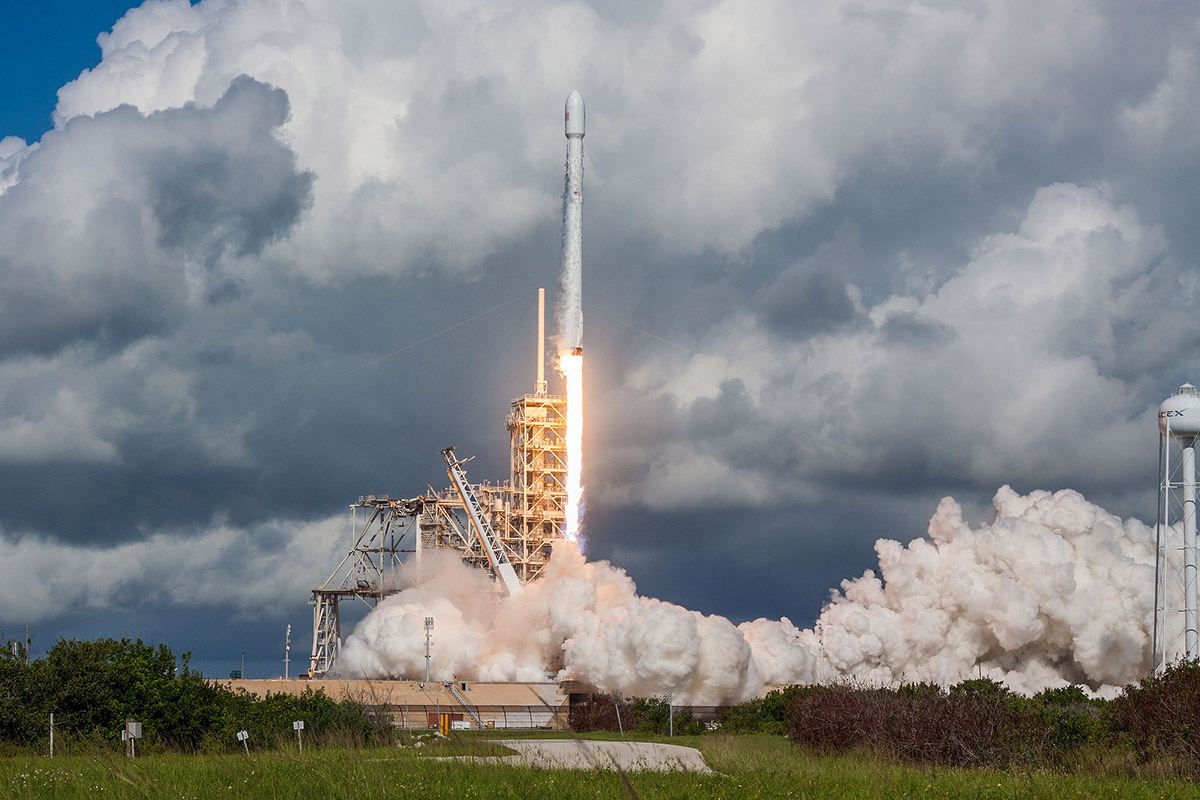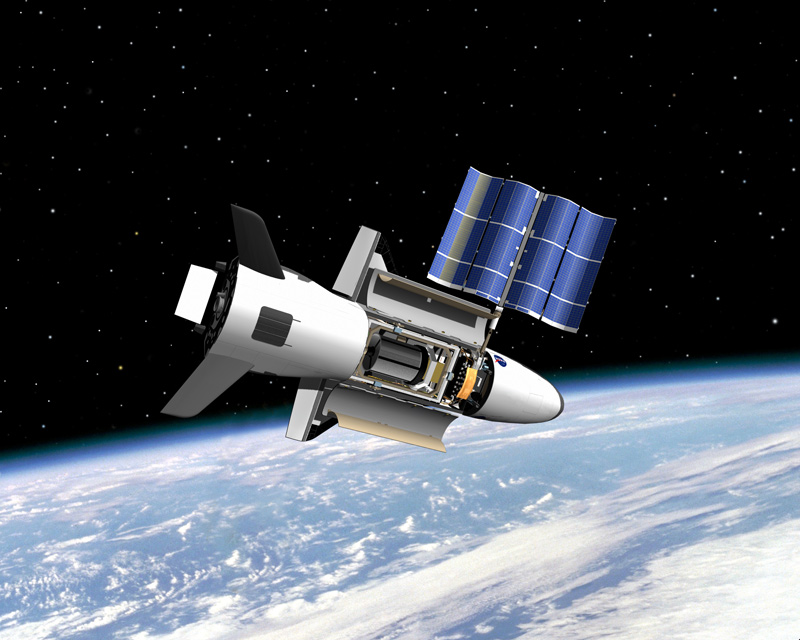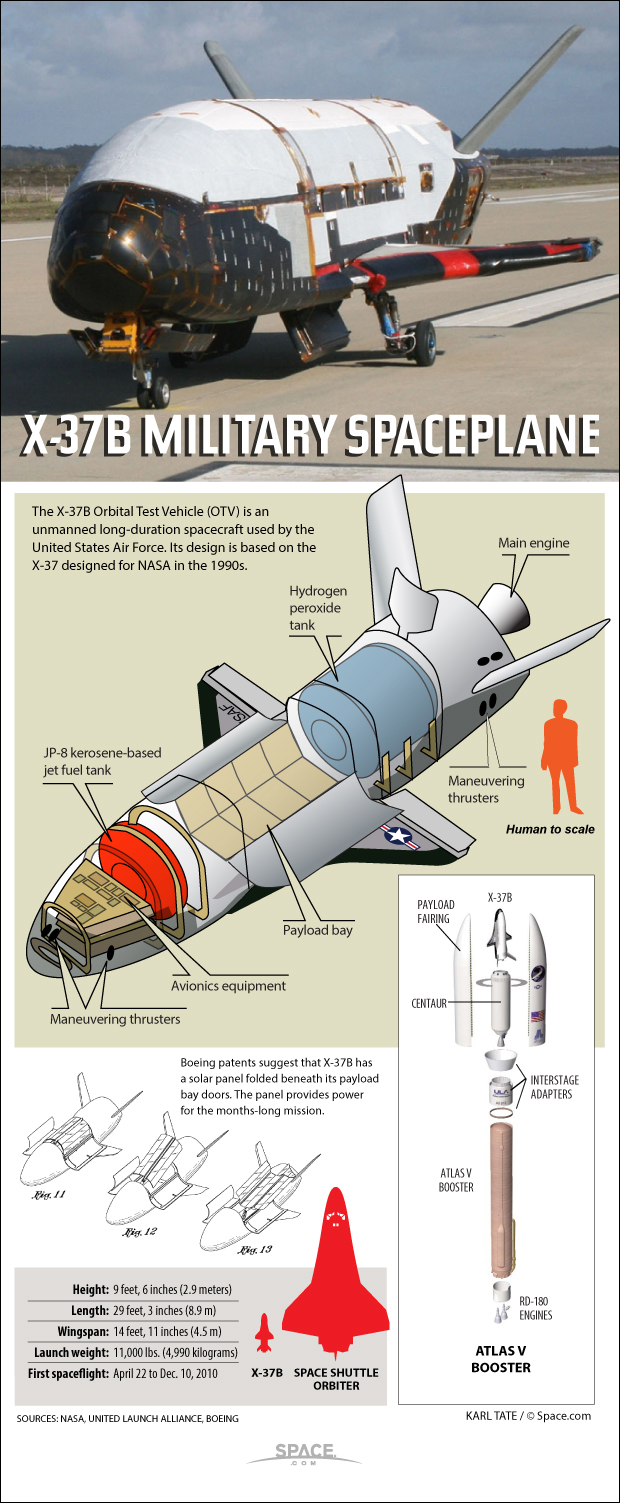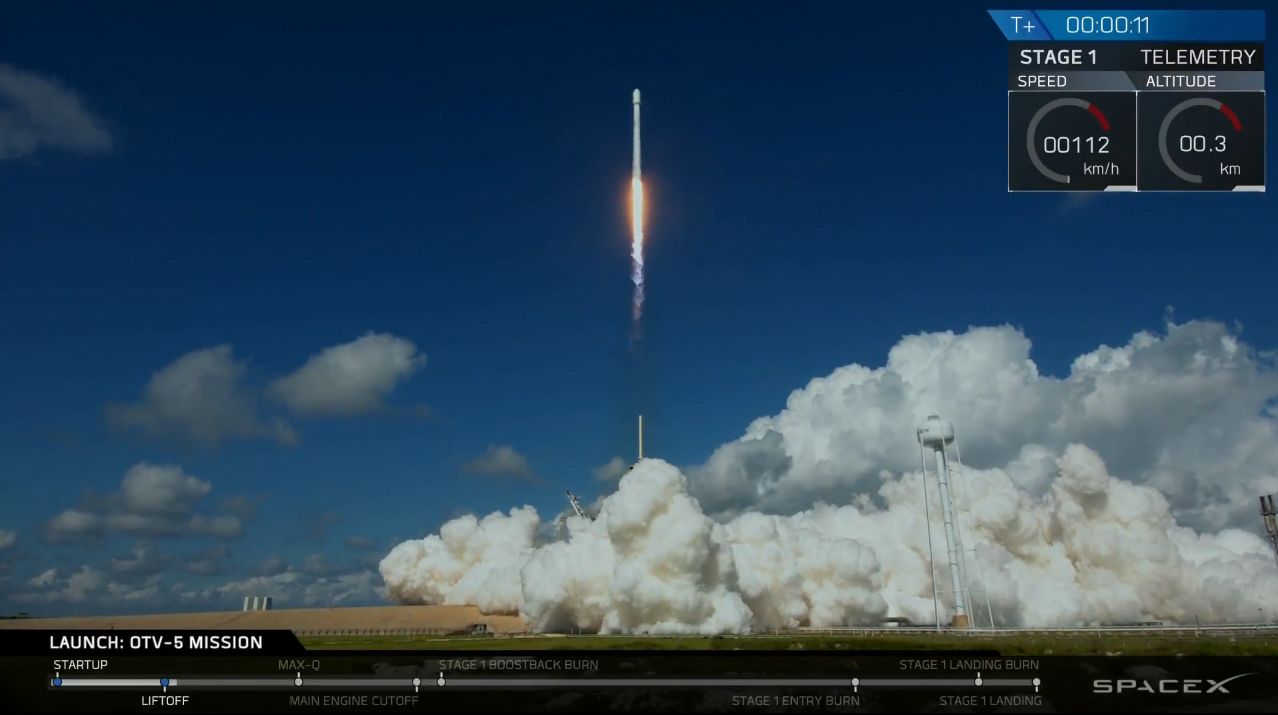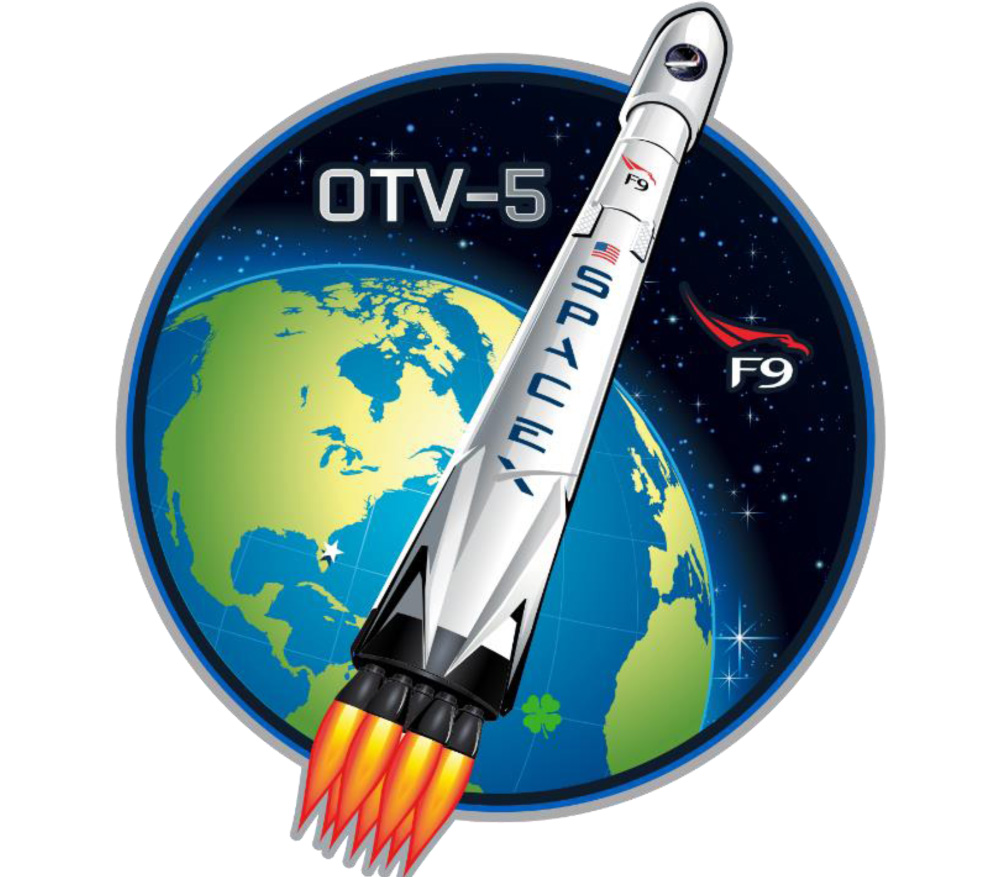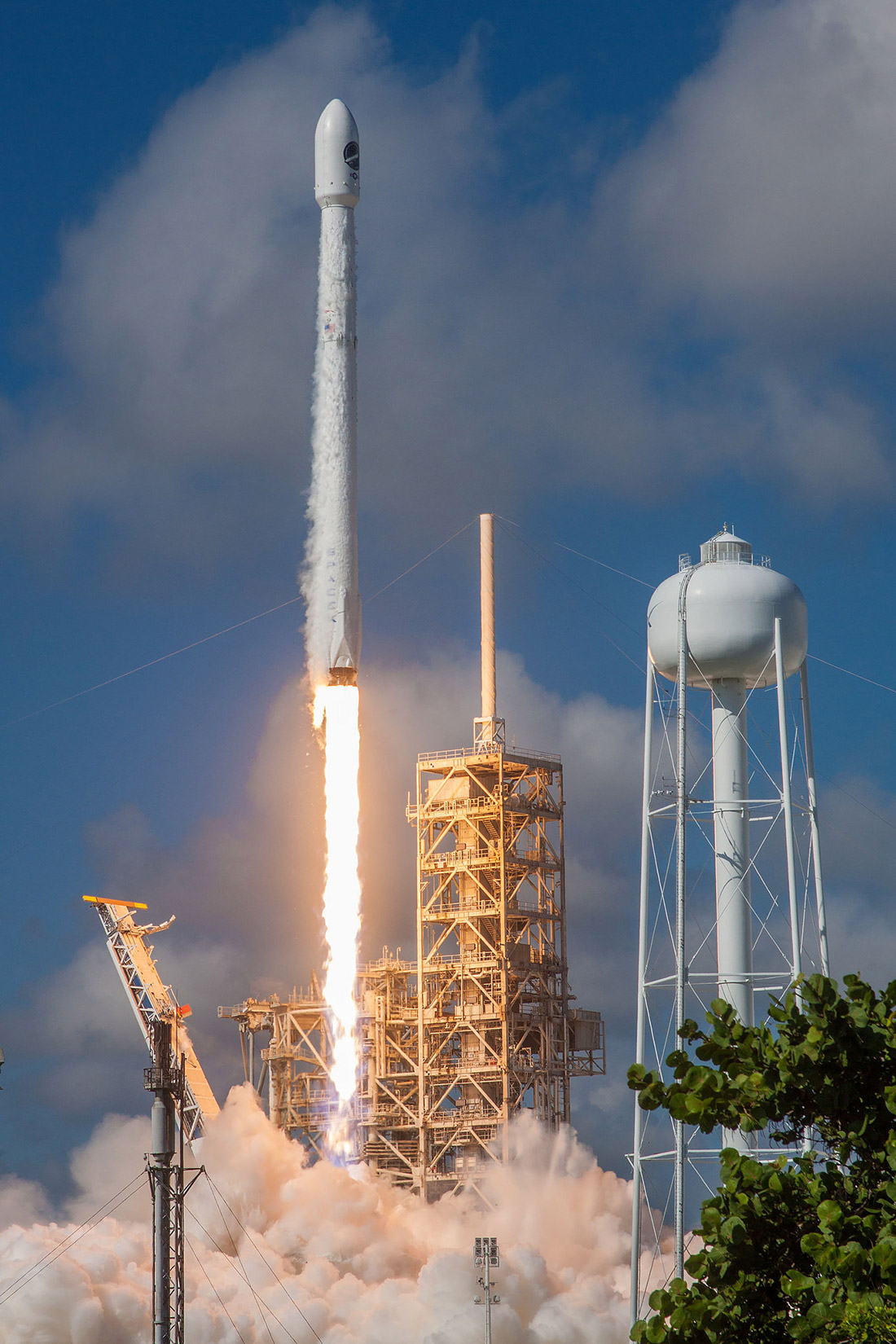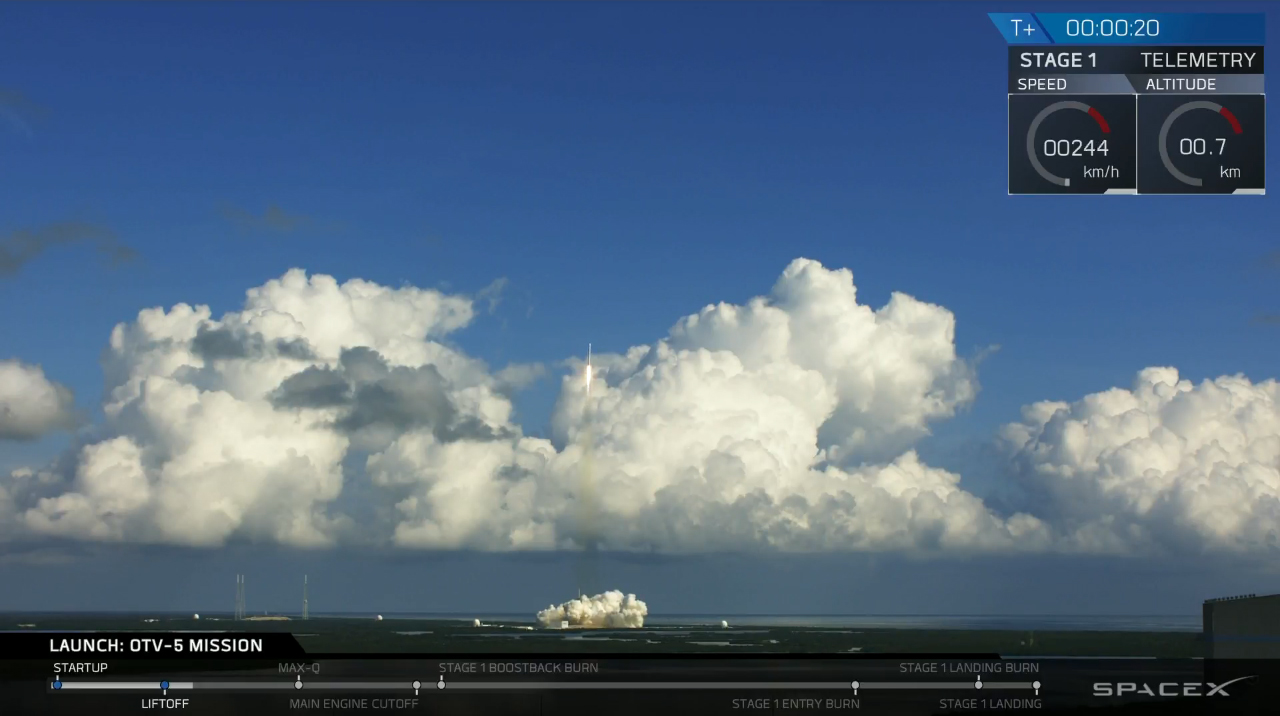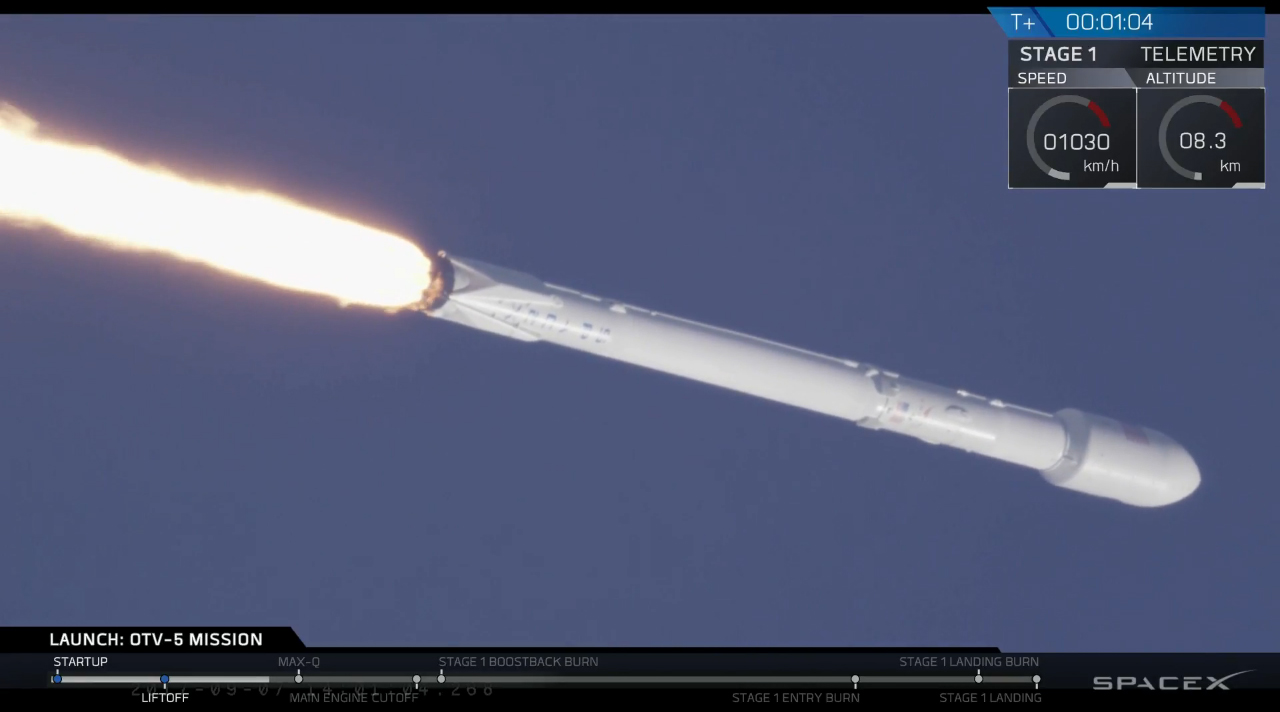In Photos: SpaceX Launches X-37B Space Plane, Lands Falcon 9 Rocket
SpaceX Launches X-37B
A SpaceX Falcon 9 rocket launched the U.S. Air Force's X-37B space plane into orbit on Sept. 7, 2017. The robotic spacecraft will conduct its fifth secret mission for the military while in orbit. This mission,
Meet the X-37B
This stock image of the X-37B shows how it would look inside a payload fairing.
A Cloudy Sky
SpaceX launched the X-37B mission just days ahead of the expected arrival of Hurricane Irma in the Florida area. Early forecasts called for a 50-percent chance that bad weather would prevent a launch.
The X-37B in Orbit
The X-37B space plane uses solar panels to provide power during its long missions in Earth orbit.
Smooth Ascent
Any weather fears evaporated during the countdown as conditions were clear for the Sept. 7 launch. Here the Falcon 9 soars into orbit from Pad 39A at NASA's Kennedy Space Center.
How the X-37B Works
The U.S. Air Force's robotic X-37B space plane is a miniature space shuttle capable of long, classified missions in orbit. See how the X-37B space plane works in this Space.com infographic.
Liftoff!
SpaceX's Falcon 9 rocket lifted off on Sept. 7 at 10 a.m. EDT (1400 GMT) from historic Launch Complex 39A at NASA's Kennedy Space Center (KSC) in Florida.
Breaking space news, the latest updates on rocket launches, skywatching events and more!
SpaceX X-37B Mission Logo
SpaceX's mission emblem for the Falcon 9 rocket launching the X-37B space plane for the U.S. Air Force.
Farewell, X-37B...For Now
The Sept. 7 liftoff marked the fifth flight of an X-37B space plane. The Air Force has two of the reusable space planes.
Falcon 9 Takes to the Skies
In this view of NASA's Kennedy Space Center, the Falcon 9 and X-37B launch straight through a cloud and into a blue sky.
Reaching 'Max Q'
About 1 minute and 20 seconds after launch, the Falcon 9 rocket passed through the region of maximum dynamic pressure, or "Max Q," where the aerodynamic force in front of the rocket is at its strongest.

Hanneke Weitering is a multimedia journalist in the Pacific Northwest reporting on the future of aviation at FutureFlight.aero and Aviation International News and was previously the Editor for Spaceflight and Astronomy news here at Space.com. As an editor with over 10 years of experience in science journalism she has previously written for Scholastic Classroom Magazines, MedPage Today and The Joint Institute for Computational Sciences at Oak Ridge National Laboratory. After studying physics at the University of Tennessee in her hometown of Knoxville, she earned her graduate degree in Science, Health and Environmental Reporting (SHERP) from New York University. Hanneke joined the Space.com team in 2016 as a staff writer and producer, covering topics including spaceflight and astronomy. She currently lives in Seattle, home of the Space Needle, with her cat and two snakes. In her spare time, Hanneke enjoys exploring the Rocky Mountains, basking in nature and looking for dark skies to gaze at the cosmos.
